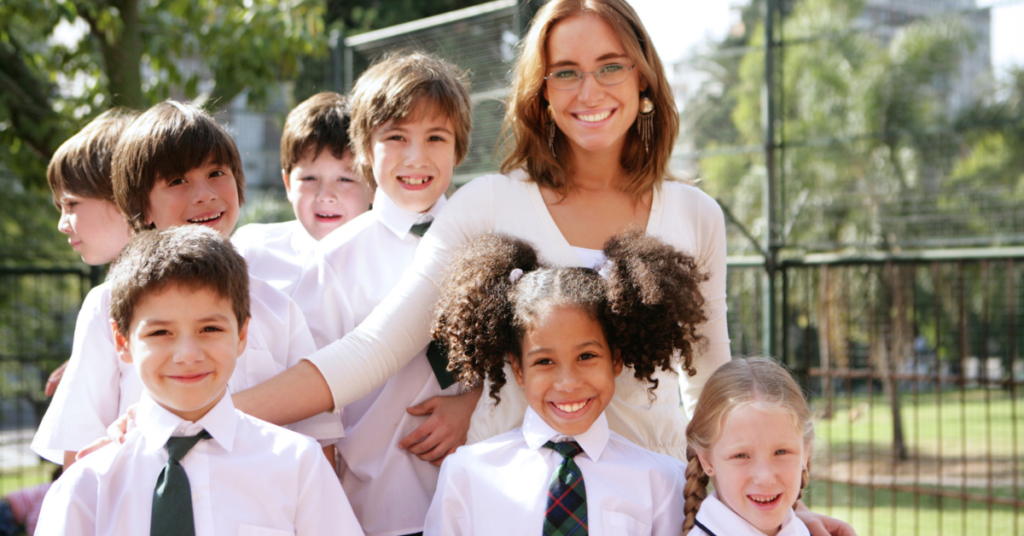Written by Megan Bissell, NCEA Vice President of Research and Data, megan@ncea.org
As Catholic schools continue to navigate the challenges and opportunities presented by changing demographics, economic realities and educational needs, this report is crucial in guiding strategic decisions, fostering community engagement and enhancing educational offerings to meet the needs of all students. The insights from the 2023-2024 academic year set a foundation for future growth, innovation and continued commitment to the mission of Catholic education.
The 2023-2024 Annual Statistical Report on Schools, Enrollment and Staffing presents a high-level overview of the current state of Catholic education in the United States, shedding light on school characteristics, enrollment trends and the strategic positioning of schools across various regions. This executive summary synthesizes key findings from the report, offering insights into the evolving landscape of Catholic education and its implications for stakeholders.
Moving forward, the Catholic education system’s ability to navigate changing dynamics—fostering stability in a world of chaos, becoming more inclusive with distinct educational models, adapting by balancing tradition with innovation will be crucial for its continued relevance and growth. These insights inform strategic planning and policy development and highlight the need for ongoing support, investment and innovation to ensure Catholic schools continue to serve as vital educational institutions and evangelists within their communities.
Below, I will share a few meaningful highlights from this year’s report, but I encourage our readers to read and/or download the PDF, free for NCEA members. For more detailed information on topics than we can print here, visit www.ncea.org/CatholicSchoolData.
Stability Amidst Chaos
Amidst societal upheaval and educational instability, Catholic schools have emerged as beacons of stability, reversing years of enrollment decline. Faced with challenges such as technological shifts, demographic changes and the pandemic’s impact, these institutions have adapted strategically. This resilience underscores their enduring commitment to providing a grounded, faith-based education in a world that often seems in flux.
The national enrollment for the PK-12 grade span is 1,693,327, with a notable stabilization in the recent academic year.
Commitment to Inclusion
Catholic schools are increasingly reflecting a commitment to inclusivity, responding to the growing diversity within their communities. By accommodating the rising enrollment of Hispanic students, addressing the needs of students with disabilities and embracing students from various faith backgrounds, these schools are actively working towards creating a more welcoming and supportive educational environment. This commitment to diversity enriches the learning experience for all students and aligns with the Catholic educational mission of serving a broad and diverse community.
The Hispanic/Latino student population in Catholic schools (19%) underscores the system’s role in serving diverse communities and its adaptability to the changing demographics of the United States.
Adaptability and Resilience
Catholic schools demonstrate exceptional adaptability and resilience by effectively blending tradition with innovation and prioritizing operational sustainability. They have embraced parental choice programs, showcasing flexibility that meets modern educational demands while preserving core values. This ability to evolve, evidenced by the strategic management of resources, development of new models and serving populations with high demand underscores their commitment to providing a quality, faith-based education in an ever-changing world. This balance of maintaining tradition and embracing change positions Catholic schools as vital, forward-thinking institutions in the education landscape.
Twenty states expanded their parental choice programs in 2023, emphasizing the importance of school choice in promoting access to Catholic education.
Changing Composition of Faculty and Staff
Faculty retention rates serve as a critical indicator of institutional stability and educational quality. With 81.1% of principals and 88.1% of teachers being retained, Catholic schools demonstrate a strong commitment to maintaining a stable and experienced faculty. The retention rate for superintendents stands at 73.4%, reflecting both the challenges and the dynamic nature of leadership within the Catholic education system.
Key Takeaways and Strategic Implications
- Stability and Resilience: Catholic schools have proven their capacity to provide stable, faith-based education amidst societal changes, with enrollment stabilizing in recent years.
- Inclusivity and Diversity: The increasing diversity within Catholic schools, especially among Hispanic students and students with disabilities, highlights the importance of creating welcoming, inclusive educational environments.
- Adaptability and Innovation: The embrace of parental choice programs and the shift in sponsorship and governance models reflect Catholic schools’ adaptability and commitment to innovation.
- Faculty and Staff Retention: High retention rates among faculty and superintendents underscore the efforts to maintain educational quality and institutional stability.
As Catholic schools continue to navigate the changing educational landscape, their ability to adapt while maintaining core values will be crucial for their ongoing relevance and growth. These insights not only inform strategic planning but also highlight the need for continued support, investment and innovation.
